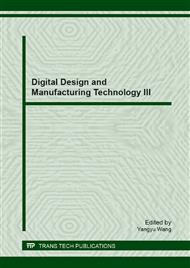p.50
p.55
p.60
p.65
p.70
p.76
p.81
p.84
p.89
Research on Machining Virtual Reality System
Abstract:
A machining virtual reality system is established by studying the operating procedure of machining. The modeling and optimization method of scene model is put forward. Two different roaming ways, that is the automatic roaming path and the free roaming path, are designed. The process of machine and the operation of virtual worker are simulated based on the technique of modular programming and collision detection in Virtools, enhancing the sense of immersion and reality of the virtual machining process. The system provides a new method for machining experimental instruction.
Info:
Periodical:
Pages:
70-75
Citation:
Online since:
March 2013
Keywords:
Price:
Сopyright:
© 2013 Trans Tech Publications Ltd. All Rights Reserved
Share:
Citation:


